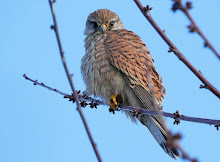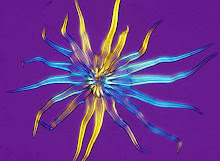



 It always seems to me that there’s a hint of menace in the way that bracken fronds erupt through the soil in spring. There’s something of the serpent about them and it wouldn’t come as a complete surprise if they hissed as they straightened their stems towards the sun. As in many other parts of the North Pennines, large patches of hillside above Tunstall reservoir in Weardale (bottom picture) are covered in this fern, that’s expanding its canopy of fronds now. Part of the fern’s success comes from the fact that it’s loaded with toxic compounds, so very few insects will feed on it, but other plants do flourish in the boggy patches amongst its uncurling stems in early spring - including this lousewort whose attractive pink flowers belie a rather gruesome botanical trait. Lousewort Pedicularis sylvatica is a partial parasite on grass roots. Below the surface it has plugged itself into the root systems of surrounding vegetation, siphoning off their water and nutrients: lousewort is a vegetable vampire.
It always seems to me that there’s a hint of menace in the way that bracken fronds erupt through the soil in spring. There’s something of the serpent about them and it wouldn’t come as a complete surprise if they hissed as they straightened their stems towards the sun. As in many other parts of the North Pennines, large patches of hillside above Tunstall reservoir in Weardale (bottom picture) are covered in this fern, that’s expanding its canopy of fronds now. Part of the fern’s success comes from the fact that it’s loaded with toxic compounds, so very few insects will feed on it, but other plants do flourish in the boggy patches amongst its uncurling stems in early spring - including this lousewort whose attractive pink flowers belie a rather gruesome botanical trait. Lousewort Pedicularis sylvatica is a partial parasite on grass roots. Below the surface it has plugged itself into the root systems of surrounding vegetation, siphoning off their water and nutrients: lousewort is a vegetable vampire. 






















I hadn't realised Lousewort was a parasitic plant. Interesting post.
ReplyDeleteHi abbey meadows, yes, it's a partial parasite like yellow rattle and eyebright. An interesting group of plants...
ReplyDeleteFascinating stuff Phil.
ReplyDeleteThat first bracken really does look like an angry dragon.